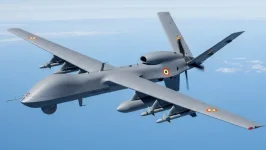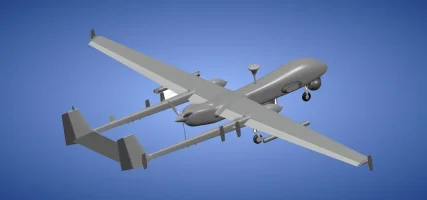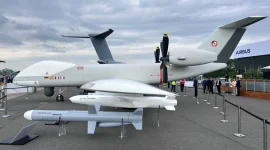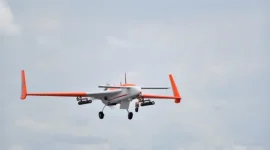- Views: 2K
- Replies: 3
India's Aeronautical Development Agency (ADA) is taking a significant step towards safer skies by leading the development of sophisticated collision avoidance systems for its unmanned aerial vehicles (UAVs).
This major initiative involves equipping the Tapas and Archer-NG drones, both designed for Medium Altitude Long Endurance (MALE) missions, with advanced Detect and Avoid Systems (DAAS), also known as Sense and Avoid (SAA) technology.
The goal is to enable these aircraft to fly safely in busy airspace, automatically identifying and steering clear of other aircraft, birds, buildings, and various potential hazards.
To achieve this, ADA is combining readily available sensors with newly developed ones, managed by an intelligent data fusion processor.
This integrated approach aims to allow India's MALE UAVs to operate reliably and safely in both regulated and open airspace environments, significantly improving their operational flexibility and safety record.
These developments come as UAVs like the Tapas have demonstrated significant endurance capabilities, highlighting the need for robust safety systems for extended missions.
As drones become more common, sharing airspace with traditional aircraft, the danger of mid-air collisions or hitting obstacles like birds or tall structures is a growing concern.
Current drone operations often depend heavily on human remote pilots or ground control systems to prevent accidents, which can limit operations, especially those Beyond Visual Line of Sight (BVLOS). ADA's new DAAS for the Tapas and Archer-NG directly addresses this challenge.
By enabling the UAVs to autonomously detect and avoid potential collisions, the system is crucial for complying with international aviation safety norms and unlocking the full potential of BVLOS operations, such as long-range surveillance, reconnaissance, and potentially cargo transport, both within India and internationally.
The DAAS functions as a comprehensive safety net, relying on several key components for awareness and autonomous response:
- Multi-Sensor Technology:
- Standard Aviation Sensors: The system includes established technologies like the Traffic Collision Avoidance System (TCAS), which communicates with other equipped aircraft to prevent collisions by issuing alerts and advisories compliant with international standards. Automatic Dependent Surveillance-Broadcast (ADS-B) allows the UAV to share its precise location while receiving similar data from nearby aircraft. A Mode-S Transponder ensures the UAV is visible and responsive to standard air traffic control radars and TCAS queries.
- Advanced Detection Sensors: A key innovation is the Due Regard Radar (DRR), an air-to-air radar using advanced Active Electronically Scanned Array (AESA) technology. This allows the UAV to detect aircraft that do not broadcast their position (non-cooperative targets). ADA is also exploring other sensors like electro-optical cameras and LIDAR to spot non-aerial obstacles such as birds or ground structures, particularly during lower altitude flight.
- Central DAAS Processor: Acting as the system's brain, the processor gathers information from all sensors. Using advanced data analysis methods, it fuses this information to create a complete, real-time picture of the surrounding airspace. Based on this awareness, it autonomously calculates the safest evasive action and instructs the UAV's flight control system to adjust its path, reducing the need for constant human oversight and enabling rapid responses to hazards.
While providing crucial situational awareness for the surveillance-focused Tapas, the system onboard the Archer-NG, which is being developed with strike capabilities, will also incorporate features like tactical weather detection to enhance mission effectiveness in challenging conditions.
This initiative represents a major advancement in Indian UAV technology, paving the way for safer and more versatile unmanned flight operations.




